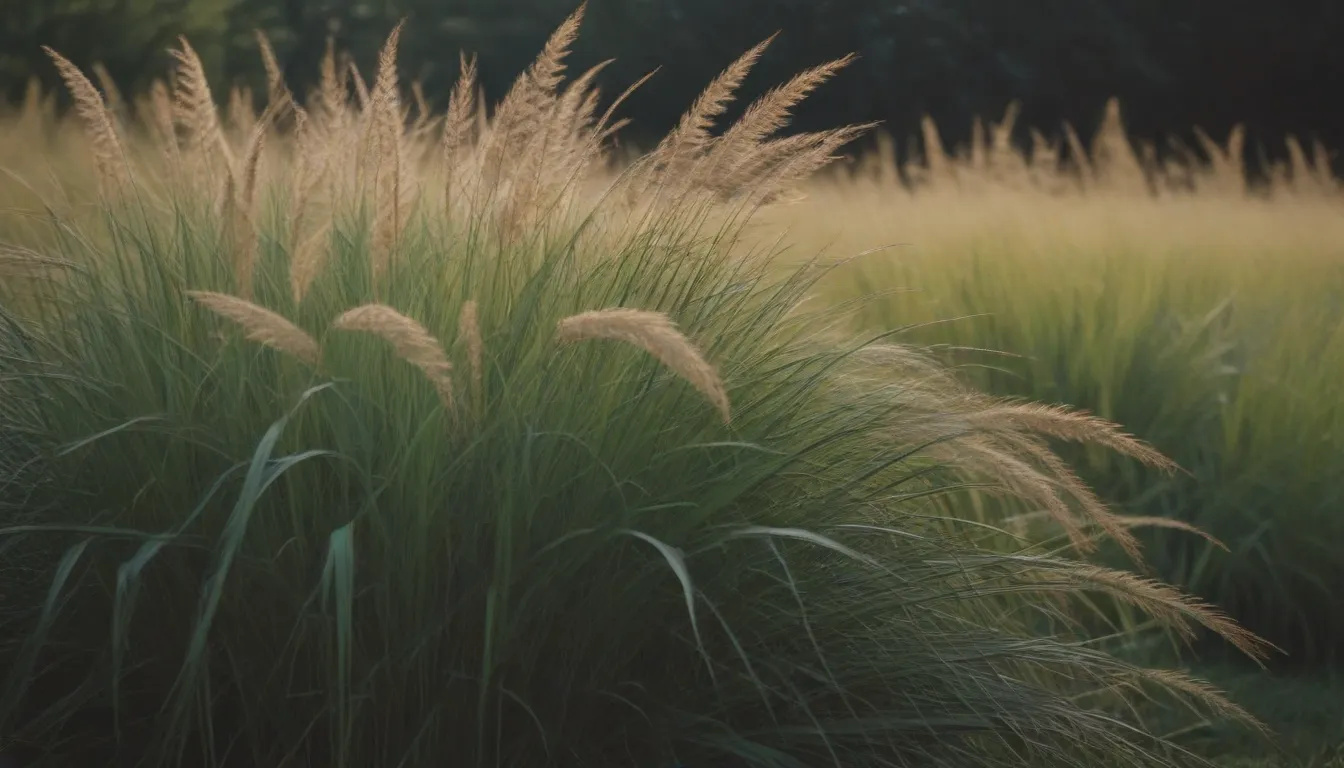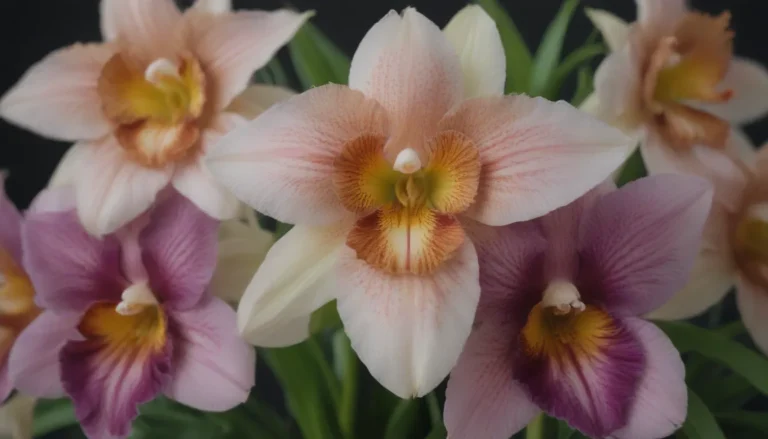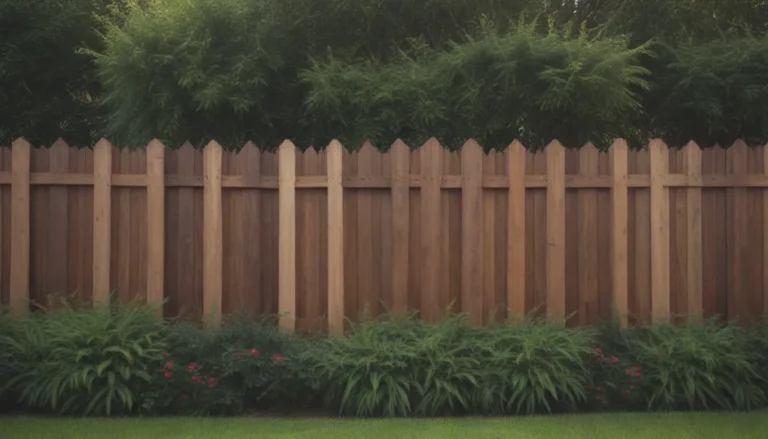The Ultimate Guide to Growing and Caring for Maiden Grass

Are you looking to add a touch of elegance to your garden or landscape? Maiden grass, also known as Chinese silvergrass, may be just the plant you need. With its graceful arching form and beautiful silvery white plumes in the fall, this ornamental grass is sure to make a statement in your outdoor space. In this in-depth guide, we will explore everything you need to know about growing and caring for maiden grass to help you achieve a thriving and beautiful garden.
Getting to Know Maiden Grass
Before we dive into the nitty-gritty details of caring for maiden grass, let’s take a closer look at this stunning plant. Maiden grass, scientifically known as Miscanthus sinensis, is a tall ornamental grass that thrives in warm weather conditions and requires full sunlight and moist, neutral to acidic soil to flourish. While it may be a slow grower in its first year, only reaching about a foot in height, it can experience a growth spurt by its third year. It can be planted in either the spring or fall, with spring being the preferred time to allow the plant to establish its root system before winter sets in.
Maiden Grass Care: The Essentials
To ensure that your maiden grass thrives and remains healthy, it’s important to provide it with the proper care and maintenance. Here are the main care requirements for growing maiden grass:
Light
Maiden grass thrives in bright sunlight, requiring about six hours of direct sunlight per day. While it can tolerate some shade, it truly thrives in full sun conditions.
Soil
This versatile grass can grow in a variety of soil types, but it prefers organic and well-drained soil. Maiden grass can tolerate both excessive moisture and drought conditions, making it a great choice for a range of landscapes. It can even thrive in sandy and salty environments, making it a popular choice for coastal landscaping.
Water
After initial planting, maiden grass should be thoroughly soaked to help strengthen its root system. Watering at the root level is essential to prevent plant rust, which can occur when the leaves become waterlogged. In the first year, water your maiden grass approximately two to three days a week, providing about an inch of water per week. Once established, the grass can sustain itself under normal weather conditions, only requiring extra care during droughts or extreme heat. Using drip irrigation at the soil line is the best way to water this plant efficiently.
Temperature and Humidity
Maiden grass thrives in warm weather and is well-suited for southern regions with temperatures ranging from 80 to 95 degrees Fahrenheit. However, it is also cold-hardy and can withstand winter temperatures, making it a versatile choice for various climates.
Fertilizer
Maiden grass generally does not require additional fertilization or pesticides, as it efficiently utilizes its water supply. Planting it in organic soil enriched with manure and compost is usually sufficient to support its growth and health.
Types of Maiden Grass
There are several varieties of Miscanthus sinensis, with some prized for their variegated foliage. Here are a few popular types:
- Zebra grass
- Porcupine grass
- Variegated Japanese silver grass
Pruning Maiden Grass
To keep your maiden grass looking its best, it’s important to prune it back in late winter or early spring before new growth appears. Use hedge clippers to cut the grass 3 inches from the ground, and be sure to wear long sleeves and heavy gardening gloves to protect yourself from the plant’s sharp edges. Additionally, prune off the flower heads before they go to seed if you want to prevent the plant from self-sowing and spreading uncontrollably in your garden.
Propagating Maiden Grass
The best way to propagate maiden grass is through division, which should be done in early spring before new growth emerges. Dividing your maiden grass every three years can help reenergize its growth, especially if you notice the center of the plant starting to die out. Before dividing, cut the foliage down to 3 inches above ground level in late winter or early spring to make room for new shoots.
How to Grow Maiden Grass from Seed
If you prefer to grow maiden grass from seeds, you can start them indoors in early spring for best results.
Overwintering
During the winter months, leave the dead grass stalks in place to serve as a natural mulch that protects the plant’s crown underground. This not only provides insulation but also creates a picturesque winter scene in your garden.
Common Plant Diseases
Maiden grass is generally resistant to pests and diseases, with the exception of rust, a fungal infection spread by spores. To prevent rust, avoid splashing water onto the leaves and water the grass at the base.
How to Get Maiden Grass to Bloom
Maiden grass typically blooms in late summer with copper-colored plumes that transition to silvery white in the fall and winter. If you’re having trouble getting your grass to bloom, ensure it receives adequate sunlight and well-draining soil. Avoid overwatering, especially during wet winters, which can cause the rhizome to rot and inhibit flowering.
Common Problems with Maiden Grass
While maiden grass is generally low-maintenance once established, there are a few common issues to watch out for:
Maiden Grass Turning Brown
Browning of the grass tips is a normal sign of dormancy, but if it occurs during the growing season, avoid overwatering or overfertilizing.
Center of Plant Is Dying
When the center of the plant starts to die out, it’s time to divide the grass to promote new growth. Dividing the plant every three to four years will help maintain its health and vigor.
Stunted Growth with Twisty Stems
If you notice slow growth, yellowing, and twisting stems, you may have a mealybug infestation. Look for white, powdery material and purple spots on the stems as signs of infestation. Treatment may require the use of insecticidal soap.
In conclusion, maiden grass is a beautiful and versatile plant that can add texture and interest to your garden or landscape. By following these care tips and guidelines, you can ensure that your maiden grass thrives and remains healthy for years to come. Whether you’re a seasoned gardener or a novice plant enthusiast, growing and caring for maiden grass is a rewarding experience that will enhance the beauty of your outdoor space. So go ahead, plant some maiden grass, and watch your garden come alive with beauty and grace!





